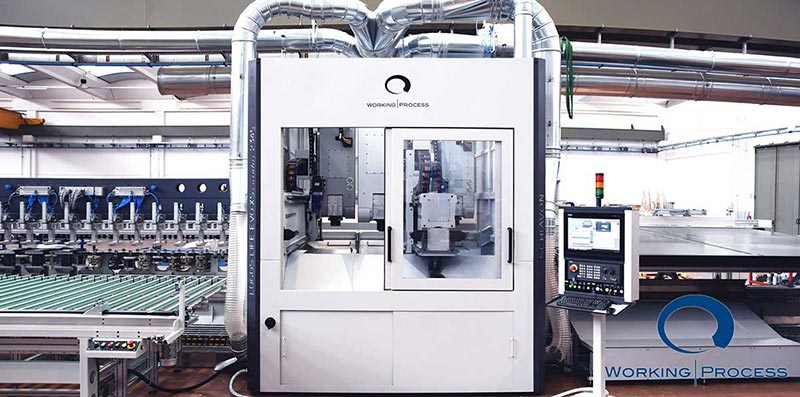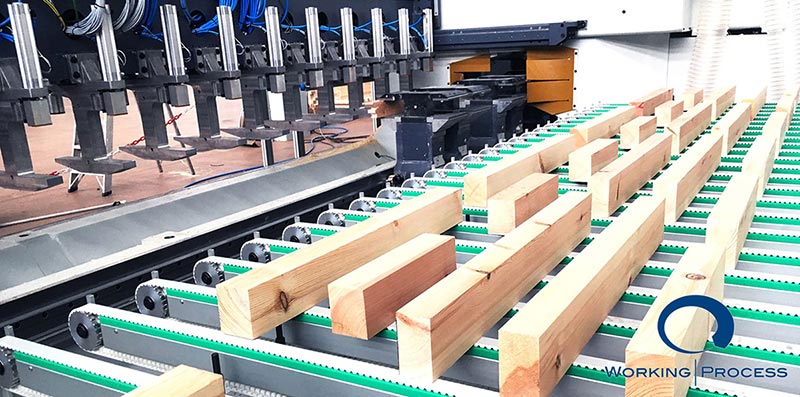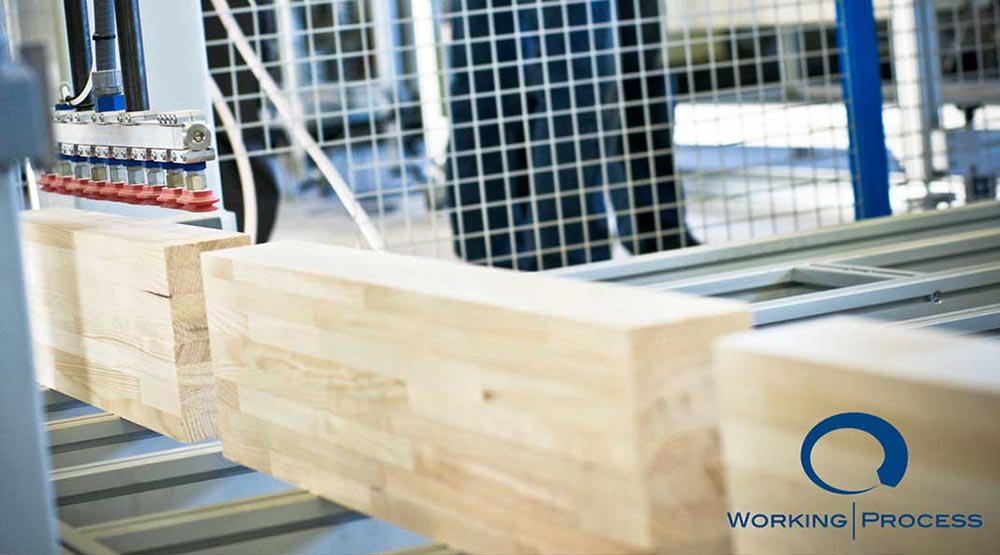Keywords: investing in technologies. Work centers are the new protagonists.
Acimall, the Association of Italian manufacturers of machinery and accessories for woodworking, in the first months of 2018, disclosed the data from the 2017 pre-consultation on the trend of the woodworking technology sector, confirming the great revolution of this sector in the last 5 years.
The opportunity is always welcome to take stock of what has been and what could be in the future, having an excellent prospect of further growth given by the promising data collected and the increasingly favorable feedback obtained from the work centers, protagonists absolutes of this important revolution in the sector.
The data released concerns the entire sector, not just the window and door sector, which in any case accounts for approximately 30%.
According to the 2017 numbers, Acimall states, a production value of 2.29 billion euros was achieved, 11.6% more than the previous year. The export performance was also excellent, amounting to 1.6 billion euros, 7.1% more than in 2016. Among the best customers, the United States, which bought Italian wood technologies for a value equal to 165.5 million euros, followed by Germany (105.8 million), Poland (102.4 million) and France (92.5 million). The value of imports is also increasing (199 million euros, up 10% compared to the previous year).

The internal market also continues on the path of growth, thanks to the investment support measures launched in recent years by the Italian Government, with clear forecasts of further progress in the short and medium term: in 2016 the Italian “consumers” of woodworking machinery they invested 743 million euros, which became 894 (140 million more) in 2017 and everything seems to indicate that 2018 could see a domestic market close to one billion euros, the new record after the 900 million of 2001.
All this, as anticipated, must be interpreted following the revolutionary path that the sector has been following in recent years. And this revolution embraces the entire sector, regardless of the scale of the company: both small artisans, carpenters and supply chains dedicated to incessant production. All the participating subjects experienced a radical transformation in working methods, all reaching the same goal: the work centers.
The main causes that fomented this revolution are:
- the ever-increasing demand for the possibility of producing by diversifying, customizing and responding to increasingly specific needs;
- the contraction of the market, which forced companies to downsize, effectively optimizing the supply chain.
And so here is how, in response to these two real and determining factors, the woodworking machinery sector has seen an exponential growth in demand for machining centers.

A machining center is a very versatile woodworking machine, capable of guaranteeing total flexibility both in programming and in the type of processing of this precious material. Sawing, drilling, milling and gluing are no longer operations that require their own machinery or specific labour, but are operations that can be carried out in succession using a single machine.
Dario Corbetta, director of Acimall, describes the situation as follows: “Before, the craftsman could and had to do everything alone. Maybe it took him a week to complete a window or door but he took care of every detail. Now, however, the machine takes care of every phase, quickly, and also allows you to move from one window to another, from one style to another, simply by pressing a button”. And he continues: “today there is a flexibility that, in the past, would have required specific manual skills for each step and continuous changes of cutters and tool columns”.
The entire sector therefore, from small carpentry shops to large companies, has completely transformed its working method, accepting the imperative that investing in technology is the only way to remain on the market.

Two other fundamental aspects have facilitated this revolution in method. The first concerns the prices of machining centers which, just until a few years ago, required major seven-figure investments to be made. Now, however, they have become much more accessible and the market also presents many entry level variants with lower costs, up to much more complex and expensive examples.
The second aspect concerns the tax breaks which mainly affected carpentry, allowing small producers to get closer to the technology.
The synergy of all these aspects, combined with the traditional professionalism of Italian manufacturing companies, has allowed the woodworking machinery sector to return to the figures of the pre-crisis period and to collect encouraging numbers for the near future.
Acimall, in its preliminary 2017 financial statements, envisages a rosy future: the fourth quarter of 2017 closed with a growth in orders of 36.8 percent compared to the same quarter of 2016 (it was 42.9 percent in the July-August period, always comparing the quarter with the same period of the previous year). A figure which is the synthesis of the results achieved by orders arriving from abroad, which grew by 35.2 percent (51.5 in the previous quarter) and of the excellent performance of Italian demand, which is expected to reach more than 49 percent, 5 percent compared to the period October-December 2016 (it was 19.7 in the second quarter).

Dario Corbetta again comments on the data disclosed: “There is no doubt that Italian users are now in the midst of a climate of greater confidence and that this, together with state support interventions, are generating robust demand, exceeding even the most optimistic expectations. ”. And he adds: “Results which are not only reasons of obvious satisfaction for technology manufacturers, but which are a prelude to a growth in competitiveness of the entire system: in recent years the wood and furniture sector has had to face an extremely complex period , reducing any investment to a minimum. Equipping yourself today with more innovative and updated technologies means having more effective and high-performance tools, producing more and better in full Industry 4.0 perspective”.

